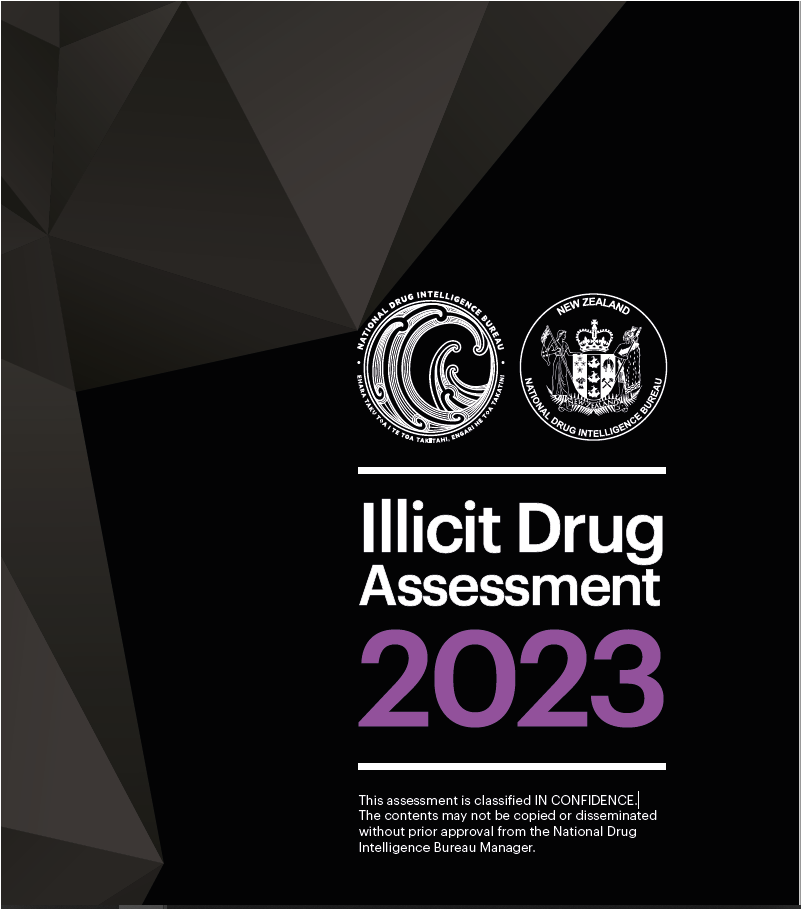
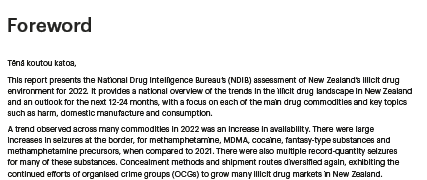
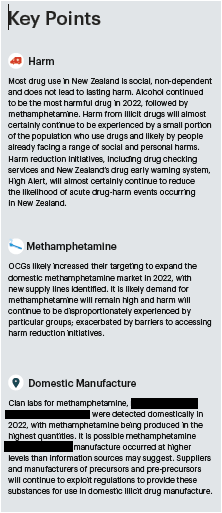
Out of scope
Out of scope
Out of scope
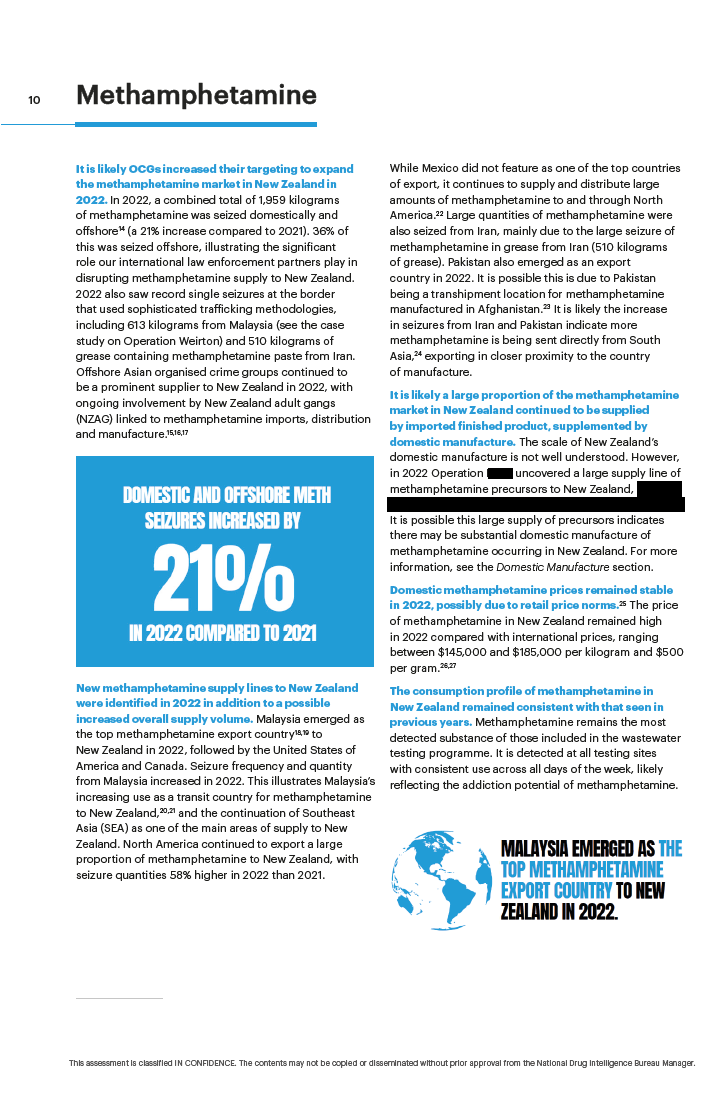
s.6(c) OIA
s 6(c) OIA
s 6(c) OIA
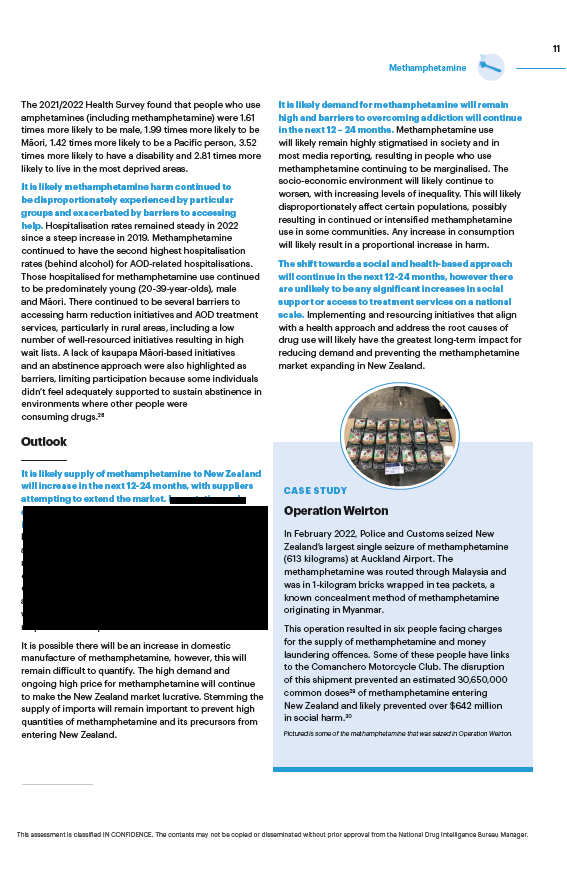
s.6(c) OIA
s.6(c) OIA
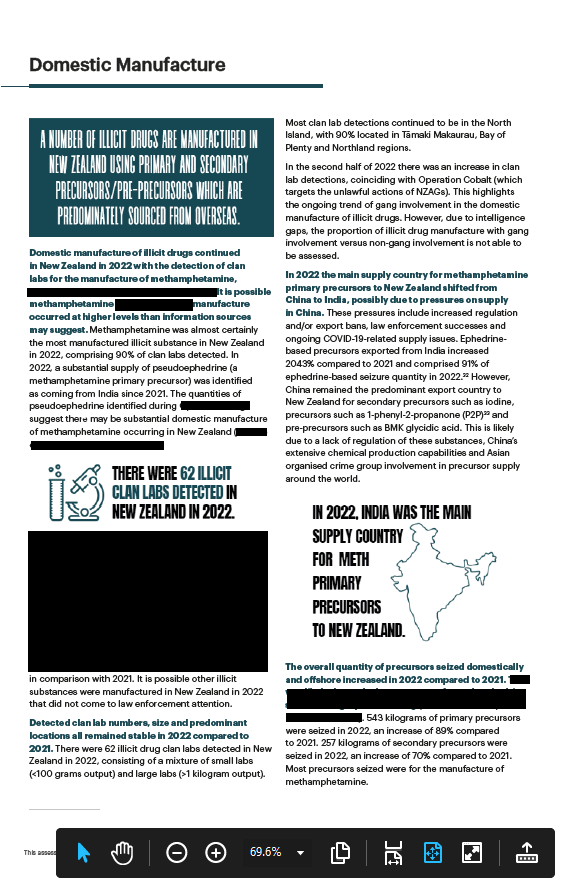
Out of scope
Out of scope
s.6(c) OIA
s.6(c) OIA
s.6(c) OIA
Out of scope
s.6(c) OIA
s.6(c) OIA
s.6(c) OIA
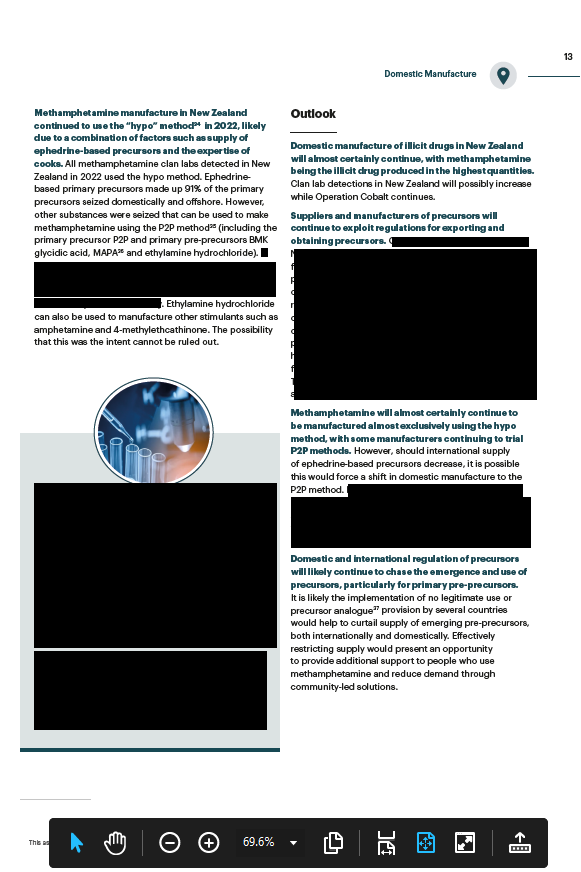
s.6(c) OIA
s.6(c) OIA
s.6(c) OIA
s.6(c) OIA
s.6(c) OIA
s.6(c) OIA
s.6(c) OIA
s.6(c) OIA
s.6(c) OIA
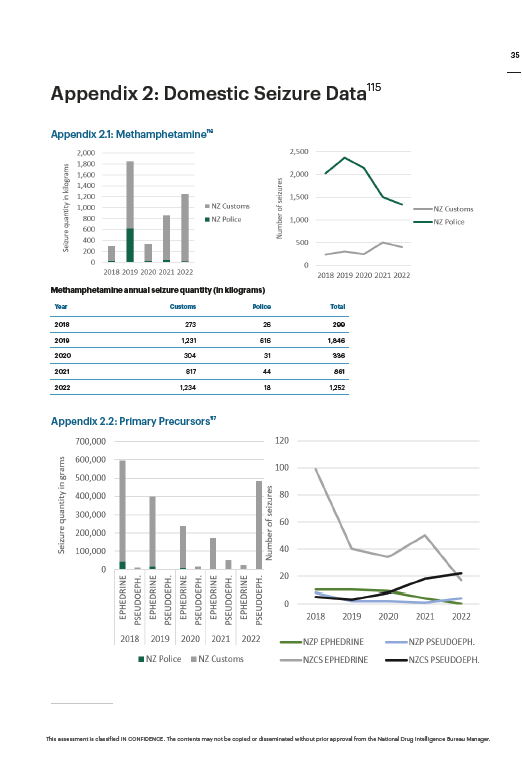
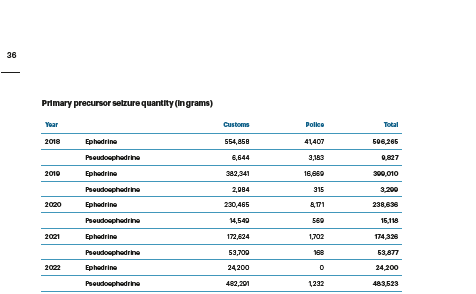
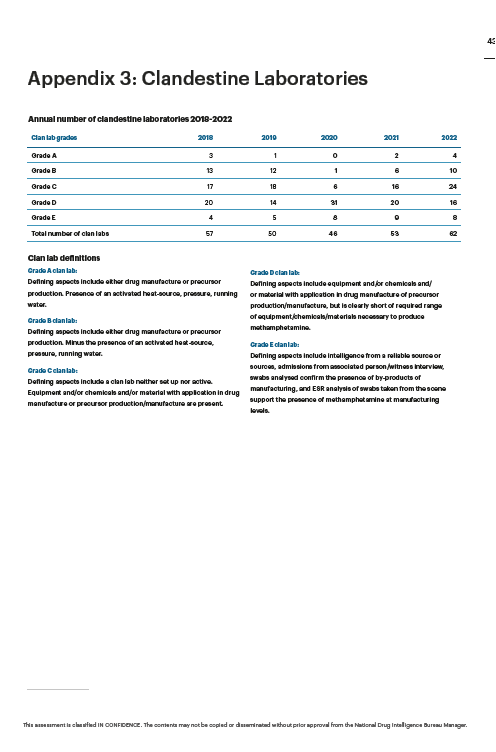
link to page 10
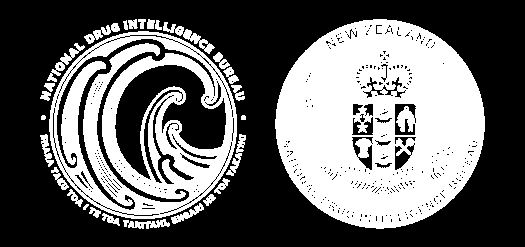 IN CONFIDENCE
National Drug Intel igence Bureau
December 2023
Re: proposed changes to access to pseudoephedrine
IN CONFIDENCE
National Drug Intel igence Bureau
December 2023
Re: proposed changes to access to pseudoephedrine
Supply
1. Seizures of ephedrine-based precursors have been trending up since 2014. While seizures of
ephedrine have declined over the past five years, seizures of pseudoephedrine have
increased. In 2022 pseudoephedrine overtook ephedrine as the most seized primary
precursor. Furthermore, in 2022 a substantial supply line of pseudoephedrine was identified
from India. The quantities of pseudoephedrine identified suggest there may be substantial
domestic manufacture of methamphetamine occurring in New Zealand.
[1] Additionally, this
suggests that there is a high level of existing demand for pseudoephedrine.
2. The highest quantity of seizures made are seizures by powder, this became the case
following the last change in regulation in 2011. However, in 2023 there has been an increase
in tablets of pseudoephedrine seized. These emerged in October, it is possible these are
being imported to explore manufacturing with tablets that will become available
domestically with the change in regulations.
3. Changes in regulations will almost certainly result in an increase supply available to those
who seek to manufacture methamphetamine. It is likely that importers and exporters will
adapt to the changes in regulation in New Zealand and exploit any perceived weaknesses.
4. Clan labs have declined over the past 5 years, but clan lab detections are often impacted by
law enforcement capacity and priorities. Clan lab detections remained steady in 2022
compared to 2021
Availability
5. Increasing the availability of pseudoephedrine through down scheduling or declassification
will likely lead to increased levels of diversion from prescription supply. Increased availability
of pseudoephedrine, combined with decreased powers for Police and Customs to disrupt the
supply of pseudoephedrine, will likely lead to a re-emergence of domestically sourced
methamphetamine precursors.
Class C vs Unclassified/ unscheduled
6. The implications of a policy change are largely determinant on whether pseudoephedrine is
down scheduled (made a class C substance) or unclassified (no longer under the Misuse of
Drugs Act 1975).
7. Class C scheduling will enable law enforcement to retain some of their current powers to
detect and disrupt the il egal sale and supply of pseudoephedrine. In addition, Class C
scheduling will allow for some controls pharmacies and health professionals can use to limit
diversion, ensure safe prescribing practices, and record sales.
8. There have been significant changes in the way that chemists and health professionals can
prescribe and supply medicines to the public since 2011. The emergence of online markets
and online prescriptions since COVID-19 has meant that the public are able to purchase
medicines online without having to go to a physical store.
9. Monitoring overseas markets have shown an increase in fraudulent webstores and fake or
counterfeit medicines. Although this is a risk with any medicines, it is possible that
[1] NDIB. (2023). NDIB Il icit Drug Assessment 2023.
1
IN CONFIDENCE
The contents of this report may not be copied or disseminated without prior approval from the NDIB Manager.
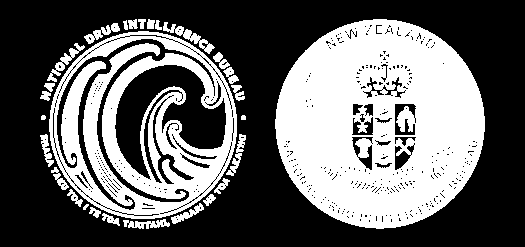 IN CONFIDENCE
National Drug Intel igence Bureau
December 2023
IN CONFIDENCE
National Drug Intel igence Bureau
December 2023
illegitimate online stores and chemists make seek to sell pseudoephedrine or fake
pseudoephedrine, presenting a risk to the public.
10. There may be a decrease in perceived risk for actors involved in the illegal sale and supply of
pseudoephedrine if it was to be down scheduled or unclassified. With lesser penalties and
reduced enforcement powers, actors may be more wil ing to engage in the sale and supply
of pseudoephedrine.
Enforcement
11. Down scheduling or declassification of pseudoephedrine will have implications on the ability
law enforcement agencies have to detect and prosecute actors involved in the illegal sale
and supply of pseudoephedrine. The extent of these implications wil likely depend on
whether it is scheduled as a Class C substance or removed from the Misuse of Drugs Act
altogether.
12. Removal of pseudoephedrine from the Misuse of Drugs Act would likely mean that
regulation of pseudoephedrine would sit solely in the Medicines Act. This would almost
certainly result in a decrease in intelligence oversight at the border, and result in a large
increase in workload on Medsafe both at the border and domestically. While Police aren’t
enforcement officers under the Medicines Act, they can use powers available to them, such
as under the search and surveillance act.
13. The availability of pseudoephedrine in pharmacies will likely result in an increase in
instances of burglary. It is likely that a change in scheduling will result in pharmacies
returning to stocking bulk amounts, of which people seeking to manufacture
methamphetamine may look to take advantage of. Without increased security measures in
place, pharmacies may be vulnerable to increased incidences of burglary or harm.
14. In addition, law enforcement agencies will have less visibility and ability to track diversion
from prescribed supply. Capacity to monitor and enforce diversion of pseudoephedrine from
licit supply will likely be a risk. Current oversight and enforcement functions have limited
resources and may require additional investment.
Other jurisdictions
15. Pseudoephedrine in Australia is schedule 4 (prescription only) and pharmacies are required
to record sales through an electronic records management process.
16. The United States set daily limits for pseudoephedrine prescribing, and requires customers
to present photo identification upon purchase, and requires sel ers to record sales and
customer information.
17. The European Union schedules pseudoephedrine as Category 1 which requires any suppliers
and users to hold a license.
Please note that the views in this document are based on current information available and may be
subject to revision through further analysis. In addition, this document should not be considered as
legal advice.
2
IN CONFIDENCE
The contents of this report may not be copied or disseminated without prior approval from the NDIB Manager.
Document 3 – Advice to Ministry of Health re pseudoephedrine
Meth production
Pseudoephedrine/ephedrine is the main ingredient for meth manufacture. Of the meth lab scenes
Police attend, 99% involve the use of the hypo method of converting the pseudoephedrine to meth.
The other two precursor substances, iodine and hypo/phosphorous acid, are combined to form
hydrogen iodine, which is what converts the pseudoephedrine/ephedrine into meth.
It is likely that the increased availability of pseudoephedrine/ephedrine will also see a corresponding
increase in the sourcing and extraction of Iodine from tincture, and the sourcing and extraction of
red phosphorous from match box striker plates. Red phosphorous can easily be used as an
alternative to hypo or phosphorous acid.
The process most commonly used for the extraction of pseudoephedrine/ephedrine from cold/flu
medication involves the use of solvents such as toluene, fuelite, shellite, ethanol, xylene, methylated
spirits etc. These are all highly flammable solvents. It is very likely that an increase in domestic meth
labs will result in a corresponding increase in the number of meth lab fires.
Declassifying pseudoephedrine/ephedrine would reduce Police and Customs’ ability to disrupt illicit
supply. This change is expected to increase domestic production of meth but not to the scale of
production seen before access to pseudoephedrine/ephedrine was restricted in 2011. An increase in
domestic meth labs will lead to greater risk to frontline Police staff, Clan Lab staff and investigative
staff who enter addresses. The volatile flammable atmosphere created by a pseudoephedrine/
ephedrine extraction can easily ignite into flash fires and produce unbreathable / oxygen-
depleted atmospheres.
Domestic meth lab numbers have decreased but are expected to increase in response to increased
access to pseudoephedrine/ephedrine
The highest number of meth labs in NZ was during the period where pseudoephedrine was available
without a prescription. There was a considerable drop in lab numbers from around 2010. Since
2020 essentially all pseudoephedrine/ephedrine used to manufacture methamphetamine is il egal y
imported into New Zealand. Imported pseudoephedrine/ephedrine is marketed and sold in kilogram
lots at a cost of $70k -$90k. This cost is prohibitive to addicted meth cooks who were previously
able to purchase a small number of packets of pseudoephedrine from the pharmacy to convert into
methamphetamine at a very low cost. It is likely that this category of meth cook, due to the costs, is
now purchasing methamphetamine they need rather than manufacturing their own.
If pseudoephedrine/ephedrine is again made available without prescription an increase in domestic
meth labs is likely, with most being the result of addicted meth cooks. It will again be cost effective
to manufacture on a smaller scale and it enables the addicted cook to ensure the quality of the
methamphetamine they use.
It is also possible that organised criminal groups will form syndicates of pill shoppers who on-supply
the purchased pil s to pseudoephedrine/ephedrine dealers control ed by gangs. The
pseudoephedrine/ephedrine obtained by these individuals would be used to produce meth for
supply.
Declassification of pseudoephedrine/ephedrine would significantly reduce Customs’ ability to
intercept shipments of unlicensed imports. This would make it easier to import
pseudoephedrine/ephedrine to enable illicit meth production. However, there have been significant
developments in the illicit production of meth since pseudoephedrine/ephedrine was classified as a
Class B drug in 2011. Organised criminal groups in Southeast Asia are mass producing meth with
lower overhead costs. This makes it is cheaper for gangs and organised criminal groups in New
Zealand to import meth and means it is less likely that these groups would look to produce meth
domestically on a large scale. It is expected that domestic production for personal use will increase
but unlikely that significant domestic production for supply would occur.
Police resource
In the early 2000s Police’s ChemDesk had 7 FTEs who managed the pseudoephedrine/ephedrine
register and generated the intel leads and instigated enforcement action by Districts to try to
identify and shut down pil shoppers. The current ChemDesk comprises a data entry person and
Investigation Support Officer. This entity is operating at capacity due to its many relationships with
the chemical industry, Customs, labware retailers, overseas agencies etc.
It would be challenging for Police to resource monitoring, checking and profiling of repeat pill
shoppers if access to pseudoephedrine/ephedrine is increased. Police resource would focus on
individuals where there is suspicion that pseudoephedrine/ephedrine is being obtained to produce
meth for supply and where there is an impact on retail crime through burglaries and ram raids.
Police recommendation
Police’s recommendation is that pseudoephedrine and ephedrine remain classified under the Misuse
of Drugs Act 1975 as a Class C drug rather than declassified. If these substances are declassified from
the Act Police (and Customs) will have decreased powers to detect and disrupt their illegal sale and
supply.
Document 4 – Excerpt from the other papers of interest section, in the Minister of Police’s
Weekly Report ending 14 January 2024
Al owing Sales of Cold Medicines Containing Pseudoephedrine
This paper seeks approval to amend the Misuse of Drugs Act to reclassify
pseudoephedrine products as Class C3 controlled drugs (currently classified as
Class B2). The aim is to increase public access to cold and flu medications
containing pseudoephedrine.
Pseudoephedrine is also used in the il icit manufacture of methamphetamine. It is
likely that pseudoephedrine “shopping” wil re-emerge with implementation of the
proposal. In addition, pharmacies that stock these products may be at higher risk of
retail crime.
While the proposed change is not expected to have an impact on overall levels of
methamphetamine demand and supply in NZ, it is expected to result in an increase
in domestic methamphetamine laboratories. Using pseudoephedrine products to
extract pseudoephedrine is usually done using solvents. This creates an
explosion/fire risk for the methamphetamine maker, others in the household,
neighbours and police staff (if investigating).
Police’s preference would be for pseudoephedrine to remain a Class B1 drug.
However, we recognise the Government’s commitment to make pseudoephedrine
more available to the public. Police strongly supports the proposal in the paper that
pseudoephedrine remain classified under the Misuse of Drugs Act, including as a
precursor substance in Part 3 of Schedule. Classification under the Act gives Police
enforcement powers and classification under Part 3 of Schedule 4 allows warrantless
searches.
(Associate Minister of Health)











